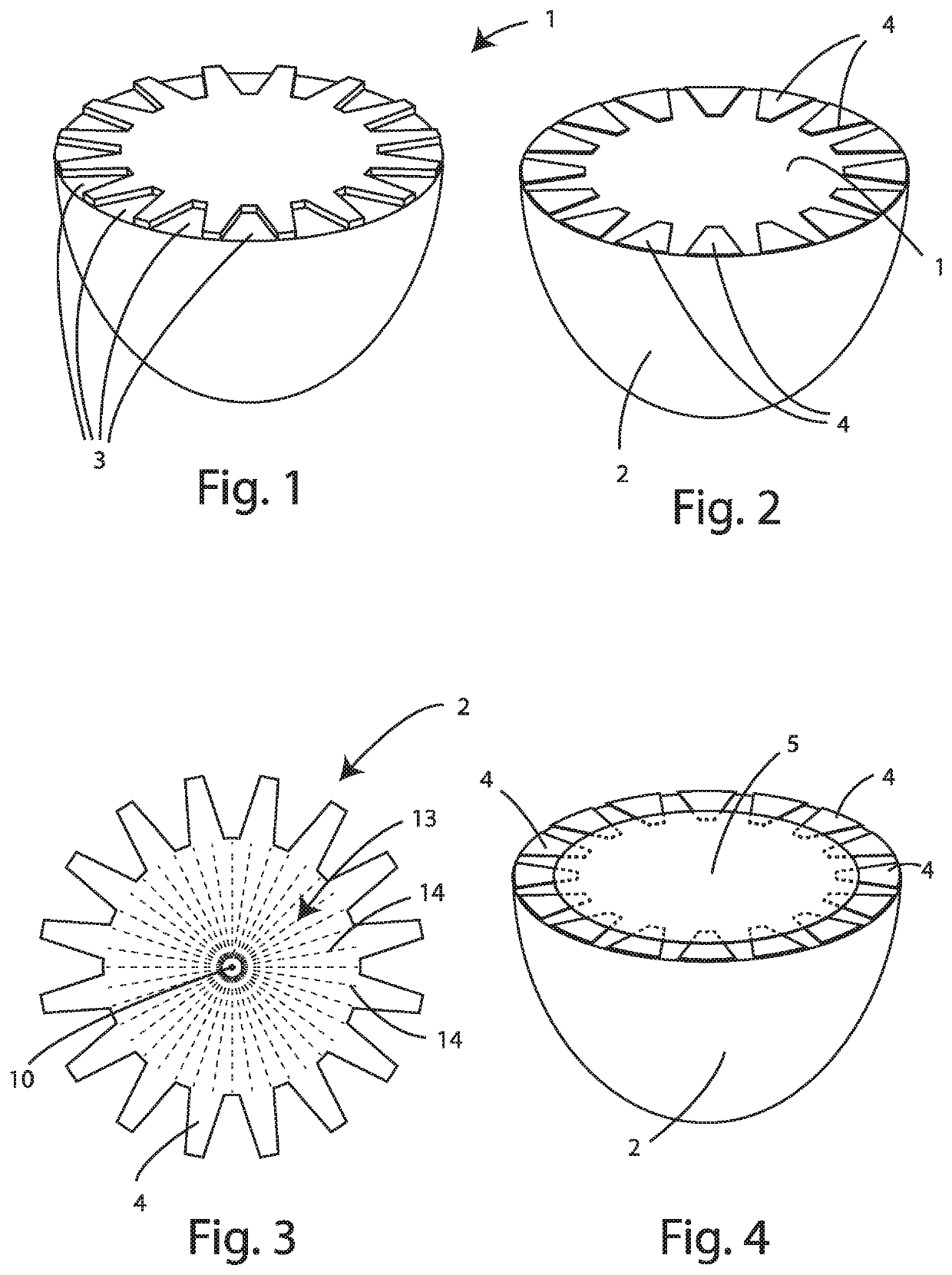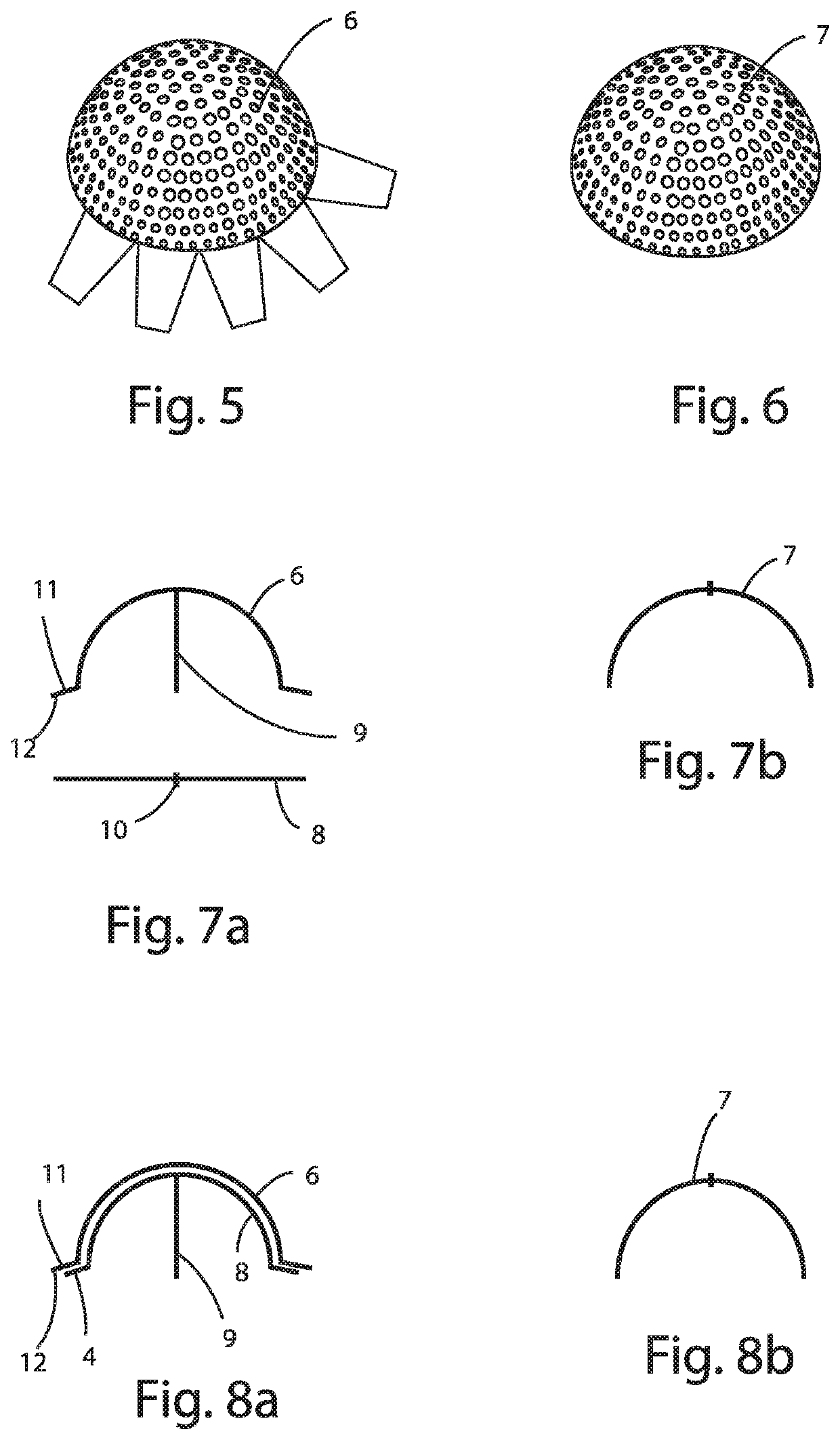Mesh or membrane covering based on biological or biosynthetic material for prosthesis, provided with fixing system for fixing to the same prosthesis, and corresponding manufacturing process thereof
a biosynthetic material and membrane technology, applied in the direction of prosthesis, manufacturing tools, disinfection, etc., can solve the problems of polyurethane foam side effects, deformation of the prosthesis, and exposure of the prosthesis to contamination risk, so as to avoid the compromise of the integrity of the prosthesis, save enormous financial resources, and improve the effect of handling
- Summary
- Abstract
- Description
- Claims
- Application Information
AI Technical Summary
Benefits of technology
Problems solved by technology
Method used
Image
Examples
Embodiment Construction
[0100]Referring initially to FIGS. 1-4 of the attached drawings, with the numeric reference 1 a prosthesis is indicated, in particular a breast prosthesis, in particular a prosthesis made of silicone, whereas with the numeric reference 2 the covering according to the invention is indicated, which is made of biological or biosynthetic material, such as for example collagen.
[0101]Preferably, the covering 2 according to the invention can be made of reabsorbable and biocompatible material, like for example decellularized biological matrices, in particular bi-layer or non bi-layer pericardium, or dermis. A reabsorbable material is the ability of a given material to be degraded by enzymes once implanted inside the human body.
[0102]A biocompatible material is a material that can be metabolized by living organisms without any harmful effect on vital functions. Biocompatibility is a parameter that indicates the harmfulness of a substance for an organism.
[0103]Further, said covering 2 can be ...
PUM
| Property | Measurement | Unit |
|---|---|---|
| length | aaaaa | aaaaa |
| length | aaaaa | aaaaa |
| length | aaaaa | aaaaa |
Abstract
Description
Claims
Application Information
 Login to View More
Login to View More - R&D
- Intellectual Property
- Life Sciences
- Materials
- Tech Scout
- Unparalleled Data Quality
- Higher Quality Content
- 60% Fewer Hallucinations
Browse by: Latest US Patents, China's latest patents, Technical Efficacy Thesaurus, Application Domain, Technology Topic, Popular Technical Reports.
© 2025 PatSnap. All rights reserved.Legal|Privacy policy|Modern Slavery Act Transparency Statement|Sitemap|About US| Contact US: help@patsnap.com



